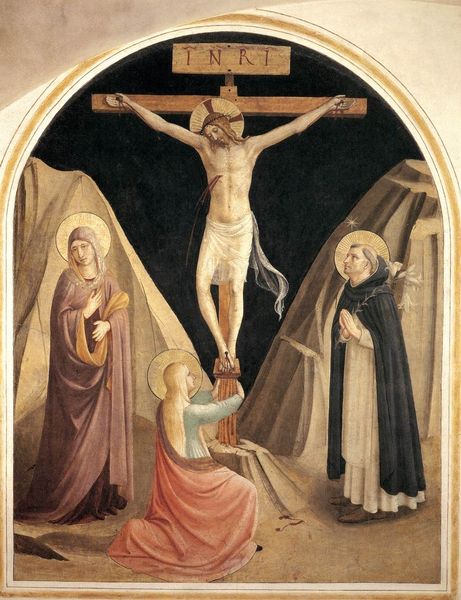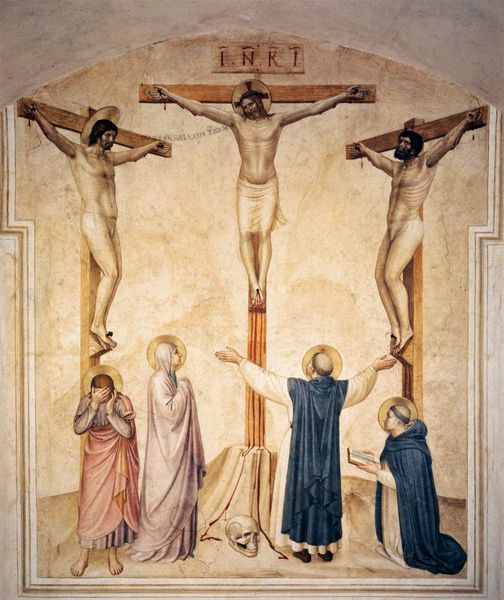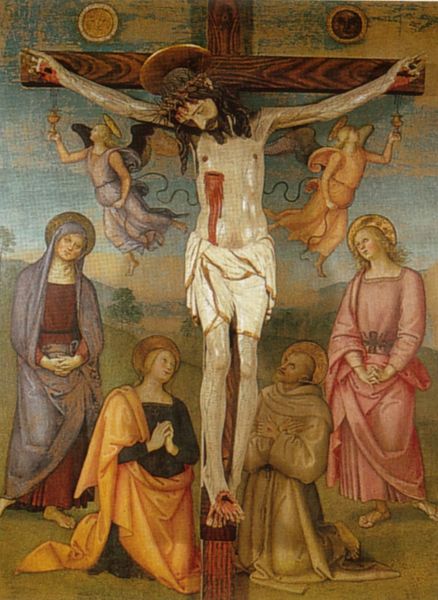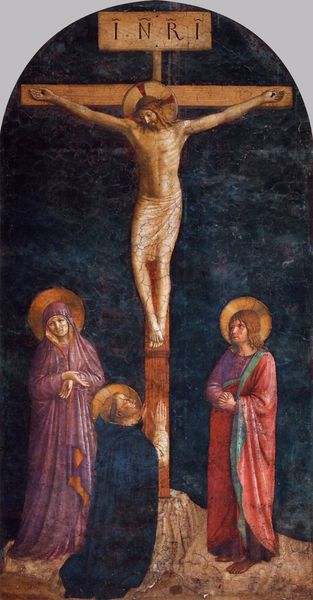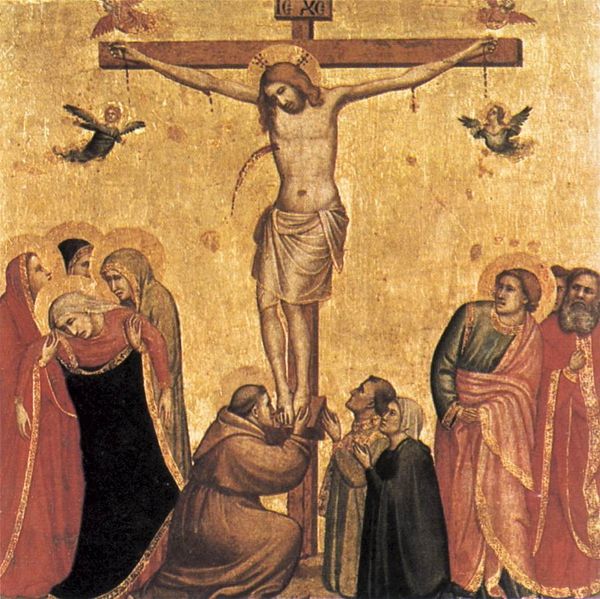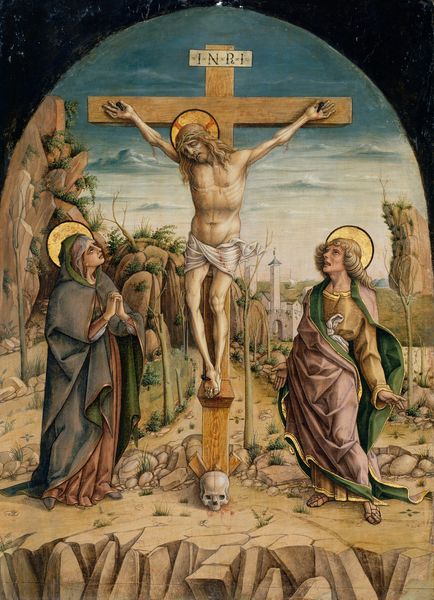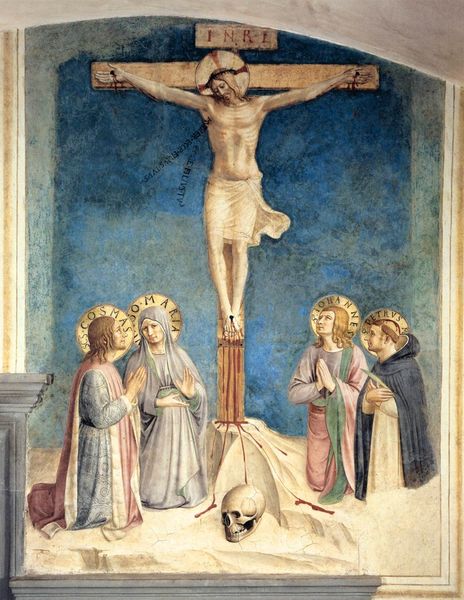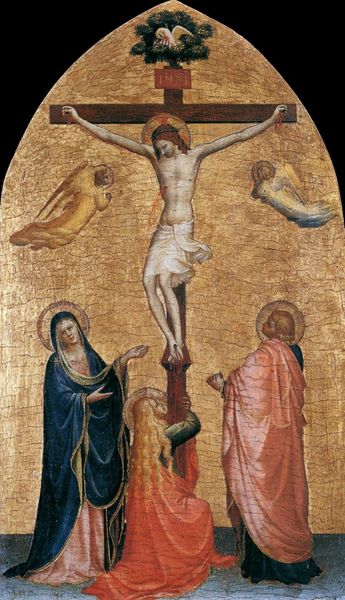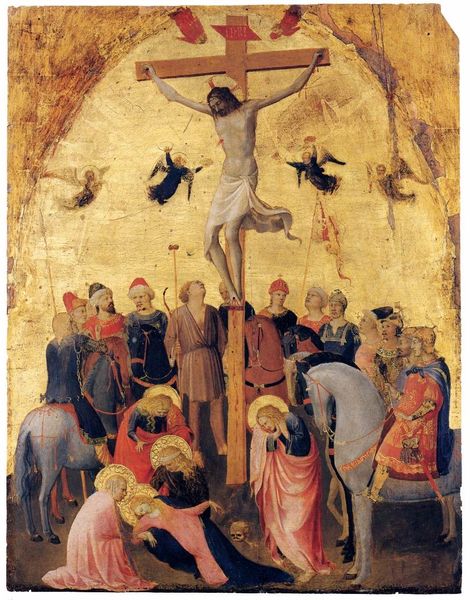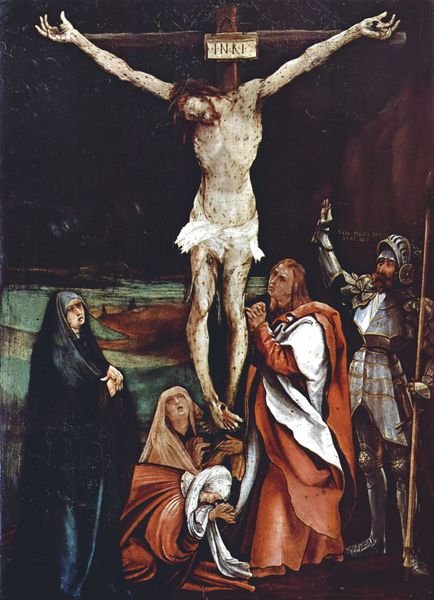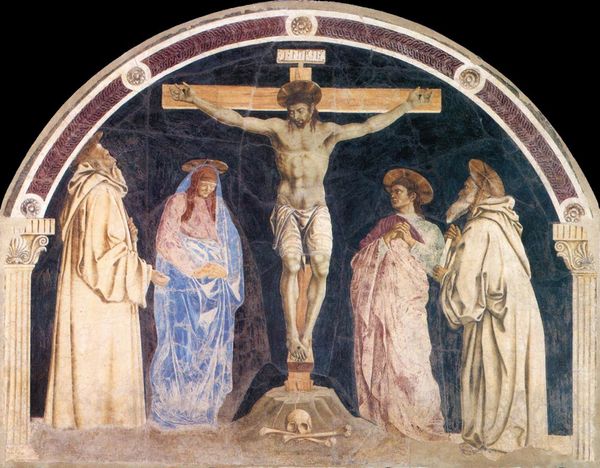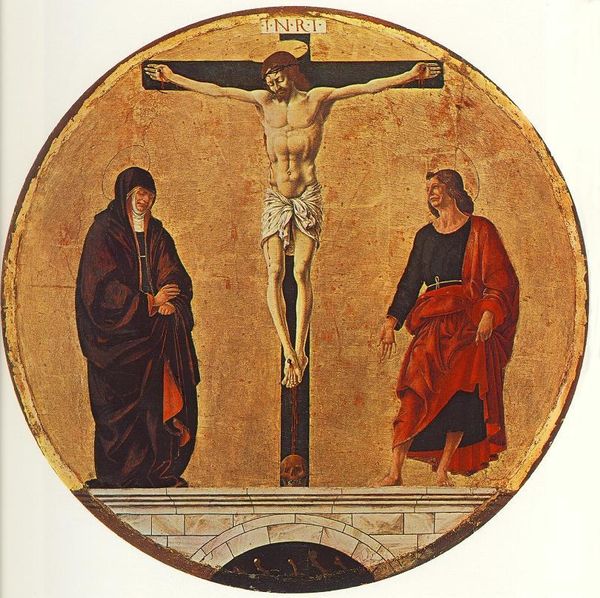
painting, oil-paint, fresco
#
painting
#
oil-paint
#
figuration
#
fresco
#
oil painting
#
jesus-christ
#
cross
#
christianity
#
line
#
crucifixion
#
history-painting
#
italian-renaissance
#
early-renaissance
#
christ
Copyright: Public domain
Editor: Here we have Fra Angelico's "Crucified Christ with Saint John the Evangelist," a fresco from 1442. I’m struck by the stark contrast between the dark, almost theatrical background and the gentle sorrow in the figures below. How do you interpret this work, focusing on the imagery? Curator: Fra Angelico’s work here isn't simply a depiction of the crucifixion; it’s an exploration of its symbolic weight. The barren landscape, for instance, isn't just setting a scene; it's reflective of spiritual desolation. Consider the blood at the foot of the cross—it’s not only a sign of Christ's sacrifice but also a promise of redemption and the sacramental wine of communion. Note how the figures, especially Saint John, are placed. Does their posture or gaze suggest something more than grief? Editor: They seem to be presenting, almost guiding, the viewer to contemplate the scene. There's a controlled composure, as if grief is secondary to some higher meaning. Curator: Precisely. It suggests that witnessing the crucifixion transforms into a spiritual act. Angelico employs familiar religious symbols to evoke emotional responses. These repetitions become powerful conduits, preserving cultural memory across time. What lasting impact do you think an image like this would have had on its original audience, particularly within a monastic setting? Editor: I imagine that the repeated viewing would have turned those symbols into a profound and personal experience. A daily meditation on faith and sacrifice. It feels more psychological than historical. Curator: Absolutely, by linking visual and spiritual narratives, artists create enduring pathways for introspection. The image continues to resonate precisely because it uses a shared visual vocabulary to touch on deeply human themes. Editor: I hadn't considered how actively the symbolic language guides the viewer's experience. It’s not just observing history, but participating in a spiritual journey. Thanks!
Comments
No comments
Be the first to comment and join the conversation on the ultimate creative platform.
